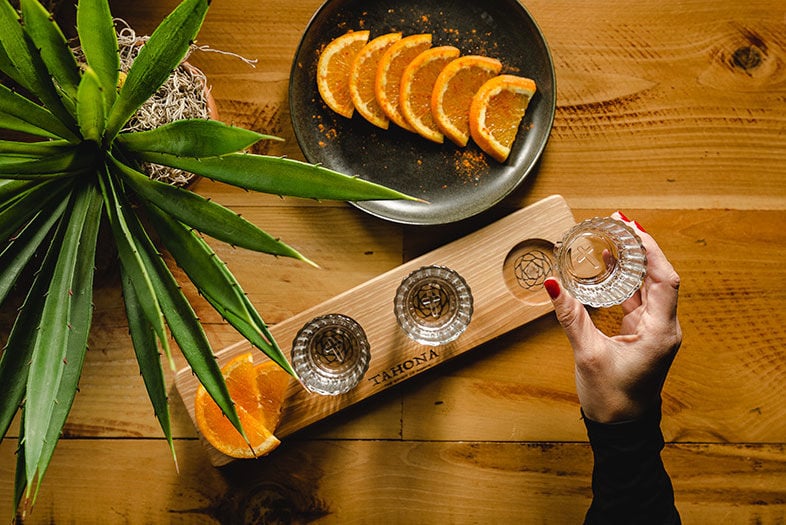Thirty-something years ago, I made my first candle right over there. Looked like a deformed ghost carrot. A kind, patient Mexican woman in a ruffled flower dress showed me how. Was it in a dusty historical dwelling with ghost vibes, maybe near the haunted Whaley House? Or was it in a retro retailer like Toby’s Candle Shop? I was seven—or was I nine? In the ’80s, every San Diego schoolkid came to Old Town to make bad candles, fumble their first Spanish phrases, and learn about missions (the gist, as I understand it: Europeans viewed god as an HMO plan, and natives could choose between the one and only one provider).
Old Town is the city’s heritage zone, dedicated to the culture of “Californios” (Spanish-speaking Hispanic people), specifically the ones who lived here from 1821 to 1872. But in actuality, the shops and restaurants have evolved it into an homage to our Mexican American culture.
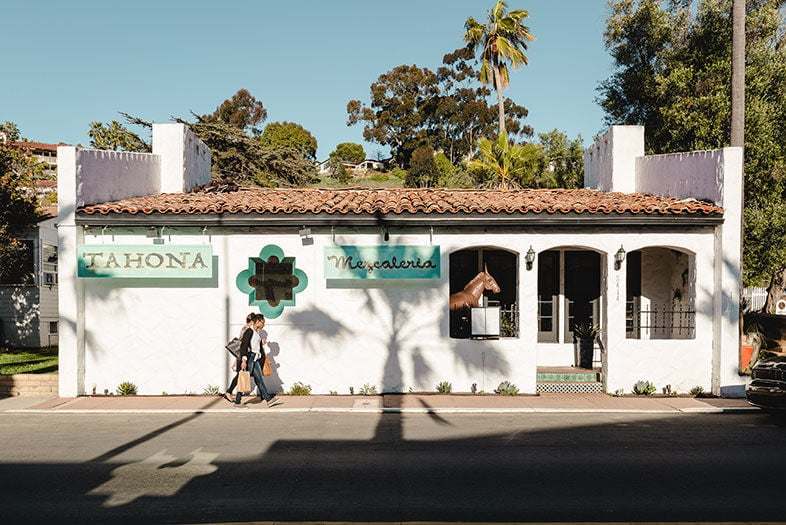
Tahona Brings New Blood into Old Town
Justin McChesney-Wachs
This was the first European settlement in California, which is why it’s often called the birthplace of the state (on behalf of the Kumeyaay people, I take issue with the word “birthplace”). It’s home to San Diego’s first schoolhouse and first newspaper (The Union, which later merged to become the Union-Tribune). It wasn’t a very practical place to build a town, too far from navigable waters. So when Alonzo Horton began developing what is now the Gaslamp District in 1867, people ditched dry, waterless Old Town in droves. Now it’s our 230-acre living historical exhibit, preserved with 100 specialty shops, 32 restaurants, nine hotels, 12 art galleries, and 27 historic buildings and sites. It’s the place to be for Cinco de Mayo and Día de los Muertos.
And it’s in bad need of new blood.
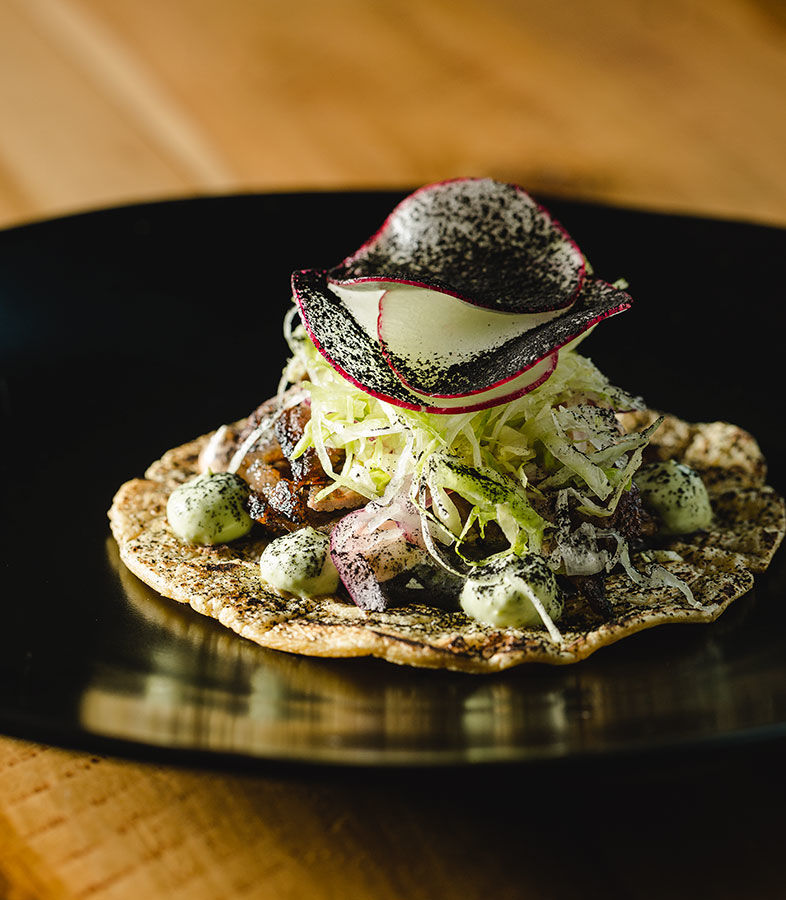
Tahona Brings New Blood into Old Town
Carne asada taco
Many people deserve medals for Old Town’s important, historical work. In a city where our pro baseball team’s name is the Spanish term for “priests,” where half our streets and neighborhoods have Spanish names, and where 30 percent of the current population is Latino or Hispanic—those roots are vital to who we are. But at the risk of sounding like a local with no soul, a sucker for the now and the new, I think it’s long past time for Old Town to evolve. Mexican American culture is so much more than what I see here. Each time I visit, I feel less enchanted by our roots than sequestered in a sort of Mexican theme park, doing my best to avoid the full-court press of gift shops.
It reminds me of Avenida Revolución in Tijuana. When Prohibition cut off America’s booze supply, Hollywood celebs fled to Tijuana’s bars. The result was Revolución, a hackneyed version of Mexican culture designed to entertain tourists. Revolución did entertain a certain kind of tequila-absorbent, hey-babe-check-out-this-funny-hat tourist. But I don’t go to Paris hoping to see a street performer dress up in a beret and paint a nude of my girlfriend. I want to interact with real Parisians, doing real, modern Parisian things, even if it’s a bit boring or not so quaintly, predictively cinematic. In recent years, Revolución has ditched many of their cliché tourist attractions for new, modern, authentically Mexican concepts—and it attracted a new, modern, culturally aware breed of tourist.
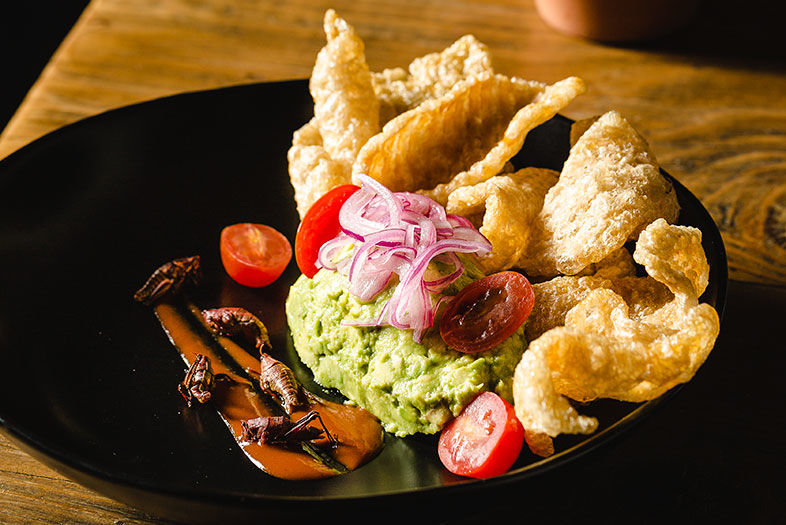
Tahona Brings New Blood into Old Town
Guacamole
It’s time for Old Town to do the same.
You might argue that it’s not Old Town’s responsibility to have new ideas; leave the au courant creativity for modern Chicano neighborhoods in Barrio Logan or Chula Vista. But how many souvenir shops does San Diego Avenue really need? How many giant, premixed margaritas must be spilled from the soda gun in the name of history? Has Mexico a form of music other than mariachi? If there’s any doubt, I can submit a mixtape.
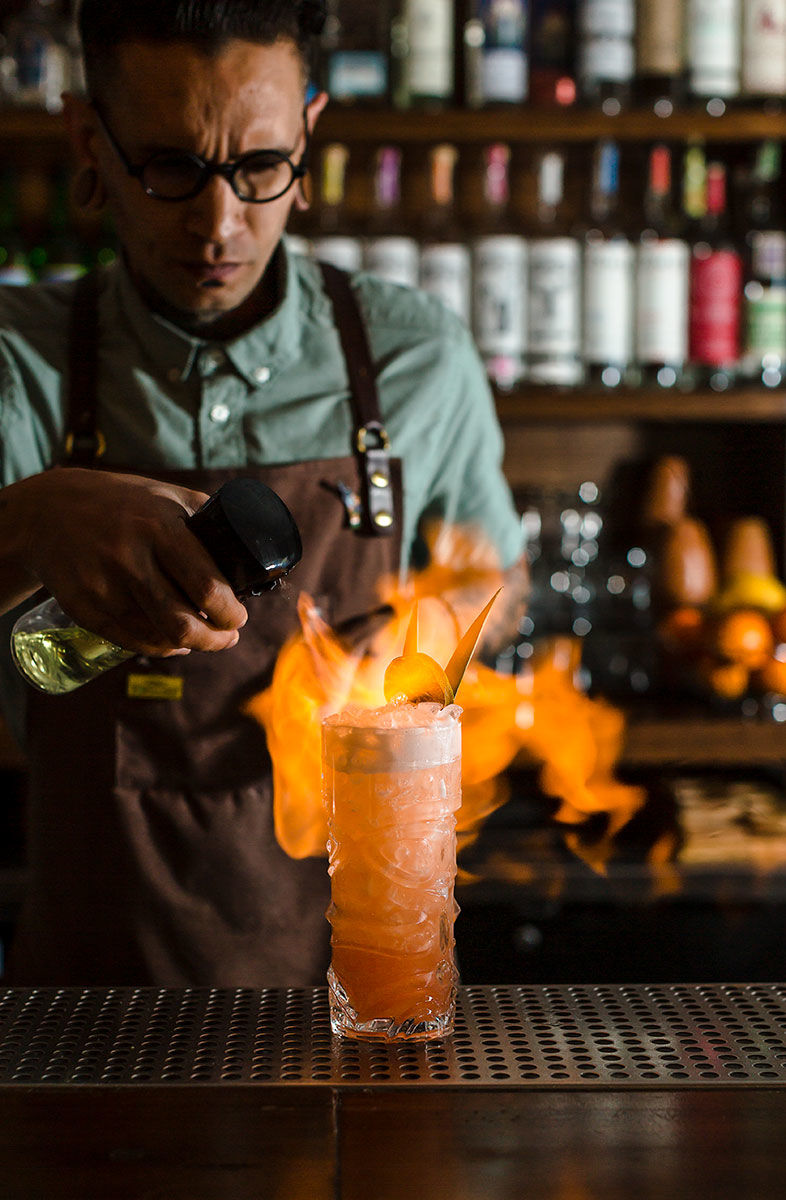
Tahona Brings New Blood into Old Town
Whaley House Punch set ablaze
In my ideal world, Old Town would strike a better balance between historical tchotchkes and modern Mexican culture.
Tahona is a very good example of the modern culture I’m talking about. The understated Oaxacan restaurant and mezcal bar is the most interesting whisper on a street that had forgotten how to whisper. Its muted, elegantly lit sign acts as a soothing night light for Old Town’s long departed, who lie buried mere feet away at the El Campo Santo graveyard. Inside, the candles (LED as they are) make the wicker and sturdy woods flicker with shadows.
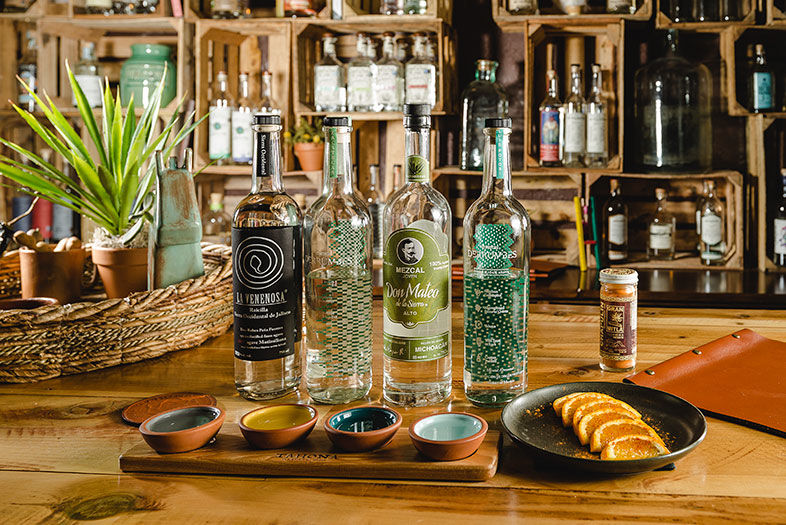
Tahona Brings New Blood into Old Town
Mezcal flight in the tasting room
On the wall, the framed farmer lording over a smoldering pile of agave serves as patron saint and herald. Tahona Bar has one of the largest collections of mezcal in the US, sourced with obsessive zeal by Steven Sadri. Sadri’s been hunting bottles of the smokier relative of tequila for over a decade. One night he chooses a Mezcal Amarás, which has pine and citrus notes—almost like a sauvignon blanc that’s been set on fire—to echo the lime marinade of our scallops aguachile. Another mezcal he selects smells of tropical fruit and candies, and works with the excellent Cornish hen atop polenta, mole negro, and chicharrones.
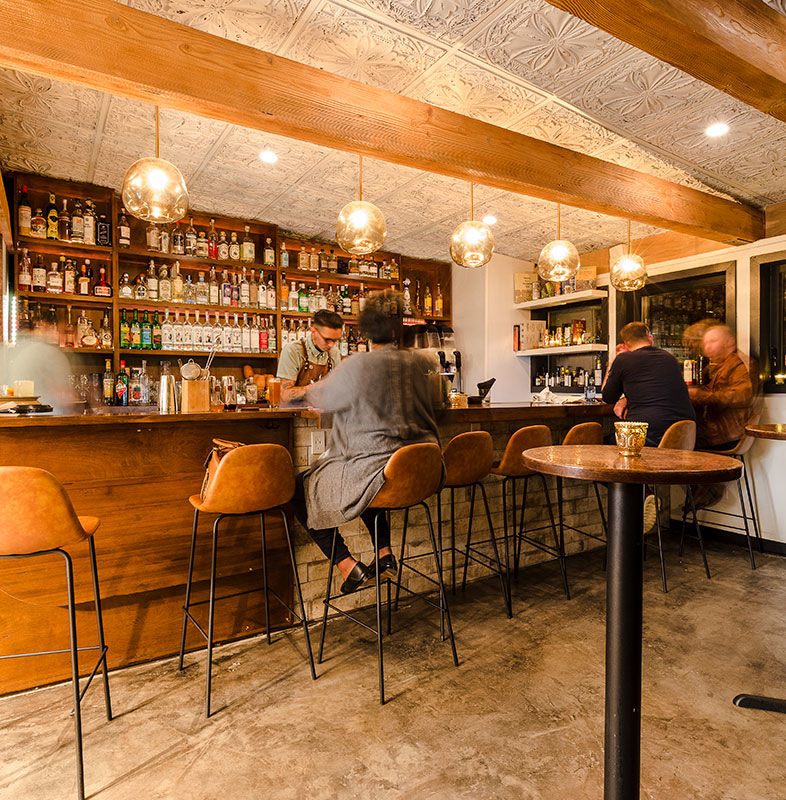
Tahona Brings New Blood into Old Town
Tahona’s tasting room
Both have the characteristically strong personality of mezcal but are also incredibly nuanced, easy to sip. Pairing it with food reveals a real relationship between what’s in the glass and what’s on the fork. Sometimes new ideas in food-drink pairing are motivated more by novelty than grace. I was once served an espresso with a dry-aged rib eye, for example—and no matter how much I can intellectualize the acidic notes of coffee’s scientific potential to “cut” the fattiness of the meat, it tasted like two brutish flavors fighting for dominion over my mouth. With that in mind, the mezcal tasting room, located off to the side of the entrance with a large communal table, is an attraction of its own.
At the bar, Carlo Bracci Devoti and Blair Marano—both vets of the world-class Level2 cocktail program at George’s at the Cove—are using mezcals (and tequilas and rums) for 22 designer drinks, including the tiki-inspired Bien Picado, with El Silencio mezcal, roasted watermelon juice, mole grenadine, ginger, tepache (fermented pineapple rind), serrano bitters, and lime. Their margarita uses housemade triple sec, and is not dispensed premixed from a soda gun. That’s because Tahona values high acumen over high volume. I really sink into the Old Town Fashioned, a riff on the iconic drink that replaces the traditional bourbon with Casta Tribal mezcal, adding lapsang gomme (Chinese tea steeped with gomme, the silkier version of simple syrup), a touch of single-malt Laphroaig Scotch, and bitters. If you needed further proof that mezcal is a complex, worthwhile spirit, this is a treatise on the rocks.
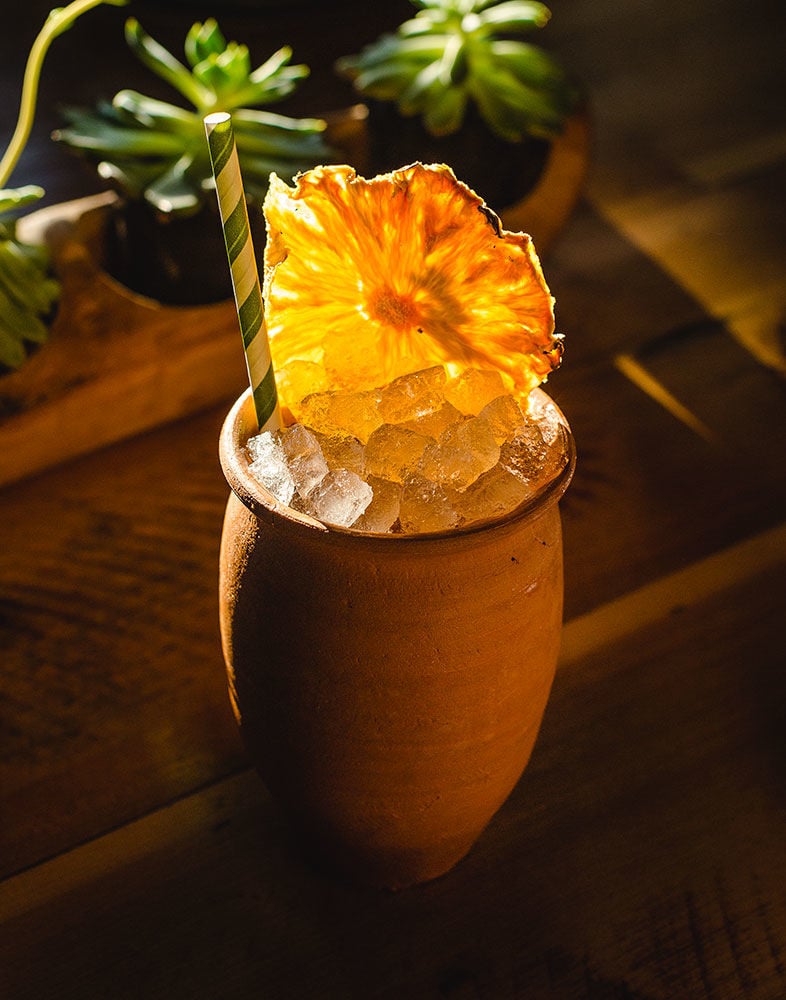
Tahona Brings New Blood into Old Town
Bien Picado
Dinner at Tahona is basically appetizers and tacos with a couple mains, overseen by chef Adrian Villareal Mora, who spent time at the legendary Noma in Denmark and at Baja’s Corazón de Tierra. Mexico’s main mezcal region is Oaxaca, and it’s that mountainous, seaside region Mora draws inspiration from. Oaxaca has about as many cuisines as people, thanks to a bevy of ethnicities and microclimates.
Mole is religion in Oaxaca (it’s called the “land of the seven moles”), and for his, Mora uses a “starter” sauce that’s evolving over time, like how sourdough bread incubates a starter for generations. A server explains that the night of my visit is “the mole’s 100th day.” The mole flight is a long flauta filled with herbed potato puree and topped with all three—mole coloradito (brown from dried chiles), negro (black from not just chocolate, but also hoja santa herb), and verde (pumpkin seeds, tomatillos, cilantro, etc.). The coloradito has shaped up nicely in 100 days, while the others, like children, need more time to become complex beings.
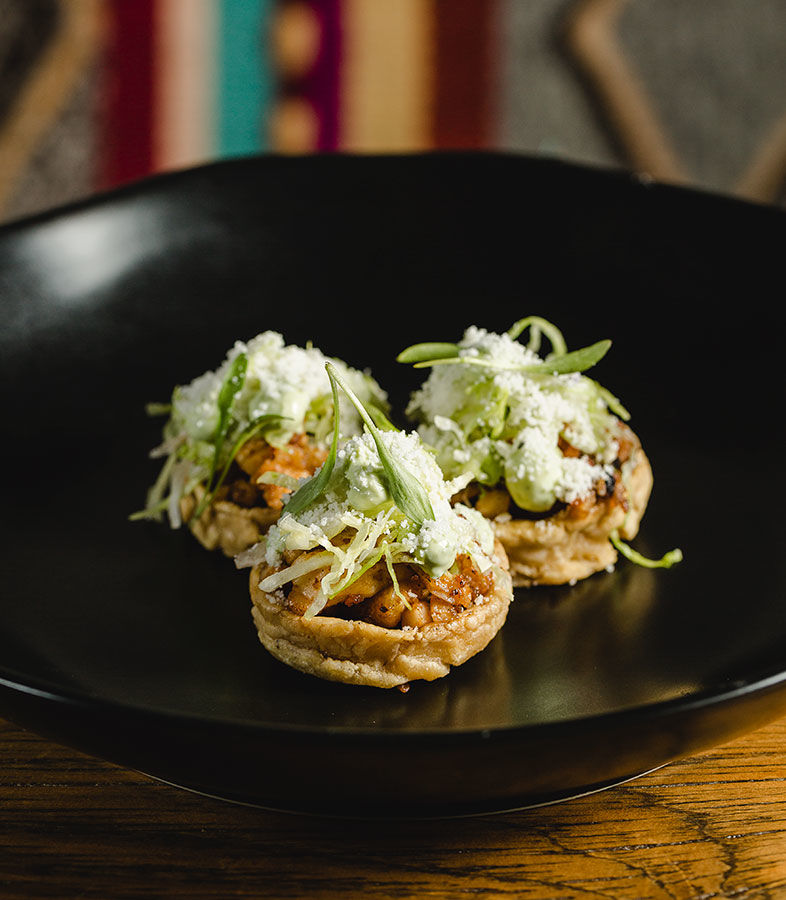
Tahona Brings New Blood into Old Town
Sopesitos
Sopesitos are similar to Oaxaca’s memelas, almost like English muffins of masa. Tahona serves a trio of them topped, respectively, with delicious smoked mushrooms, barbacoa (if anything says barbacoa on their menu, order it, because it’s Mora’s crowning achievement here), and a less successful surf ’n’ turf of octopus and chorizo. The octopus tastes a tad low-tide, like it swallowed too much seawater. Mora’s not delicate when dressing or topping a dish, which works on the shishito peppers (a ticker-tape parade of chile morita, queso fresco, and partially ground corn nuts), but not so well in the otherwise nice kale salad (with fresh pears, queso añejo, pomegranate and pumpkin seeds, and too much morita-citrus vinaigrette).
I often pass on housemade guacamoles, which are like the miso soup of Mexican food—largely ceremonial, rarely distinctive. But Tahona’s is both delicious and different, with a thin line of ground chapulines. Yes, grasshoppers sound gross (eating them whole has freaked me out on multiple occasions), but he grinds the Oaxacan delicacy into a tangy-hot spice that brings a deeply Mexican electricity to the guac. Plus, chicharrones are served instead of chips. And chicharrones (fried pork skin) make chips seem a lesser participant of deep-fryer exercises.
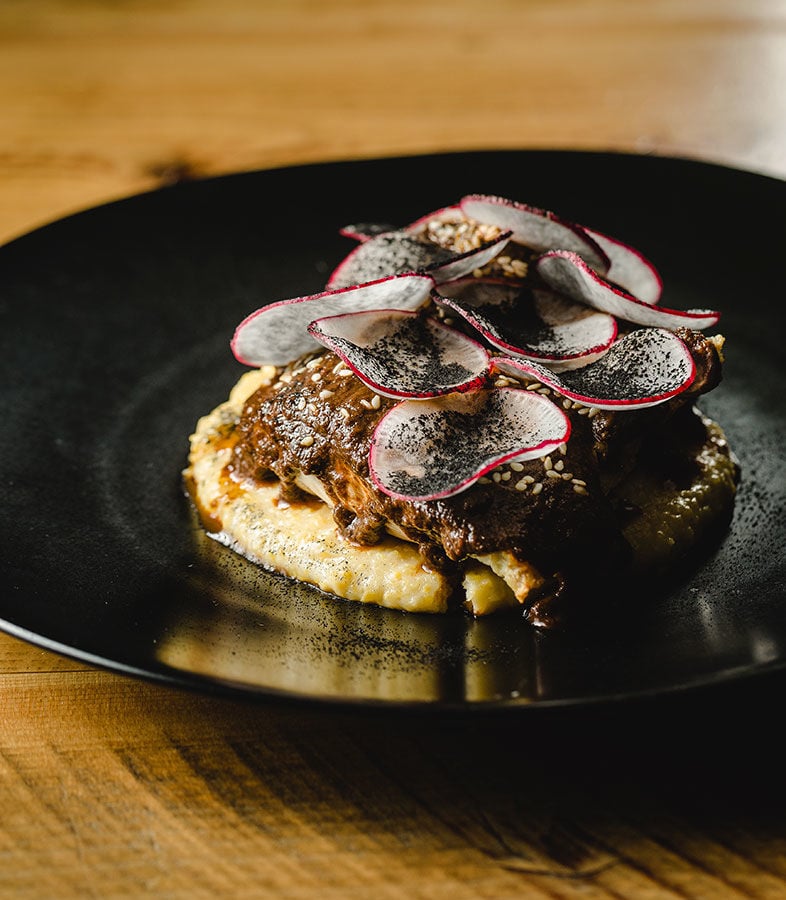
Tahona Brings New Blood into Old Town
Cornish hen mole
Almost every Tahona taco delivers, some more than others. The barbacoa (on special one night) makes all sorts of pains go away, existential or otherwise. In the most recent census, at least 40 percent of San Diegans identified their religion as carne asada. And while Mora’s marinated steak may be thicker and less crispy/well-done than locals are used to, it politely surpasses most local taco shops with its chorizo mayo, avocado crema, and onion ashes. The fact that he uses refried beans shows he doesn’t let fancy Noma chops get in the way of a Mexican comfort food.
Aguachile is another Oaxacan tourist attraction and state pride. Most locals know only the clear, lime-based versions, but try Tahona’s red aguachile with shrimp, tinted with chipotle peppers. The scallops don’t fare as well, with an overriding bitterness. That’s usually one of two things—too much lime zest and pulp, or wet scallops, which are treated with sodium tripolyphosphate. I doubt Mora’s using STPP scallops, so it’s probably a zesting gone overly energetic.
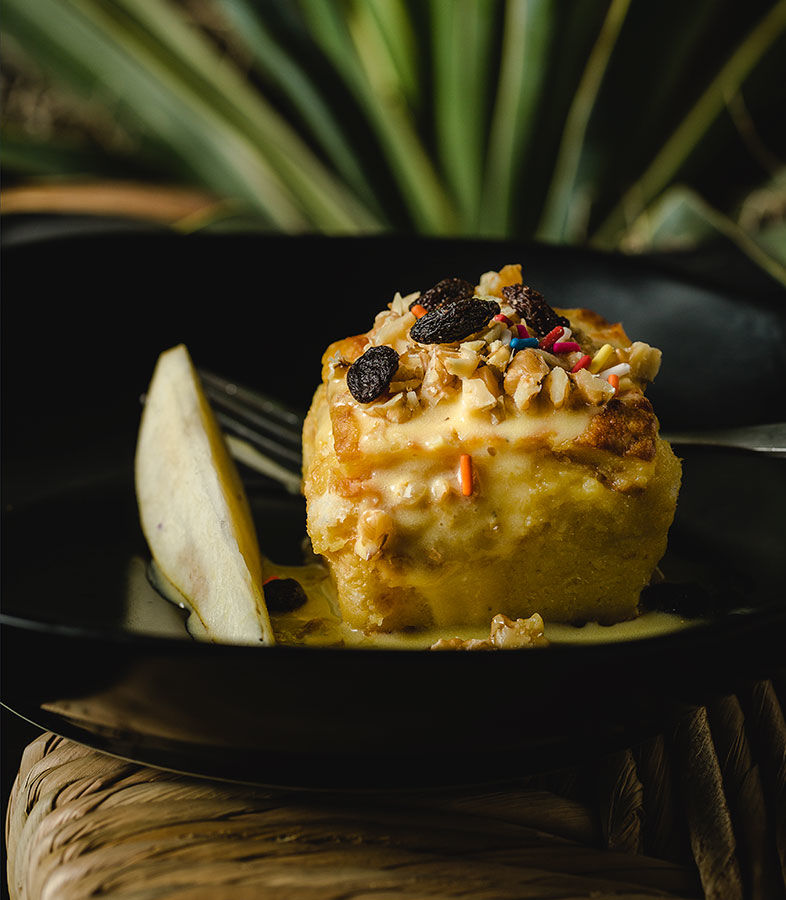
Tahona Brings New Blood into Old Town
Capirotada
For dessert, they’ve got a nice churro with charred marshmallow fluff and chocolate sauce. But the exclamation mark is the capirotada, a Mexican-style bread pudding with dulce de leche and crème anglaise poured over candied walnuts, with a side of pears for freshness and zing.
New ideas have died in Old Town, repeatedly. Live mariachi and cruise-ship margaritas have a debilitating gravitational pull on many visitors. But the city just approved a measure to triple the housing here (from 474 to 1,405), which suggests that real, modern life is no longer their bogeyman. And the cozy, casual Tahona stands, quietly, on the precipice of overdue change.
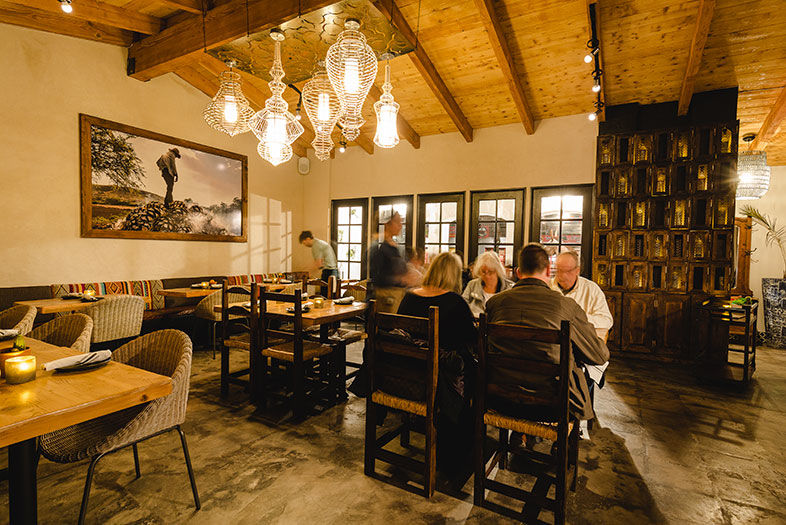
Tahona Brings New Blood into Old Town
Justin McChesney-Wachs
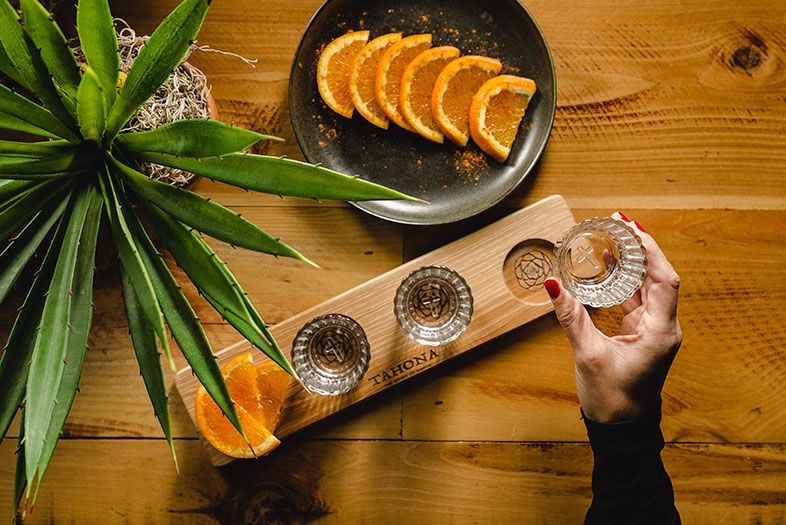
Tahona Brings New Blood into Old Town
PARTNER CONTENT
Mezcal flight at Tahona









